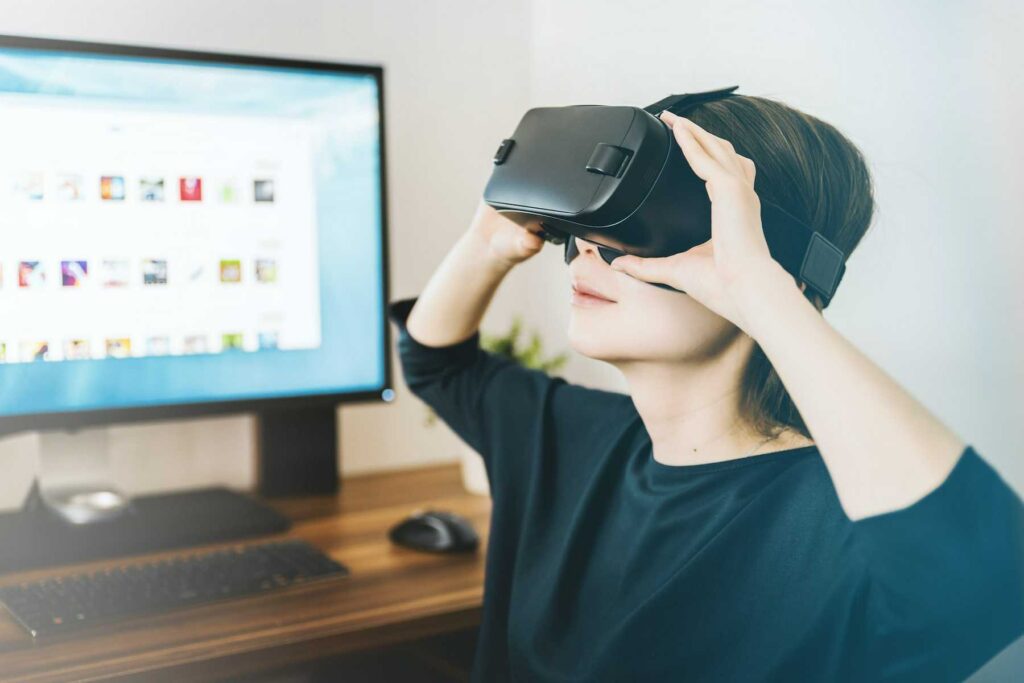Therapeutic methods for treating people with autism have seen significant advancements in recent years. Improvements in technology and methodology have seen a revolution in the healthcare industry for therapy with a focus on making the experience easier and less intimidating for both children and parents of children with special needs. Breakthroughs in the virtual reality space provide a new and unique option for many people suffering from autism. The applications of virtual reality when treating children with special needs are many and offer an easier experience for both the kids and their parents when seeking therapy.
What is ABA Therapy?
Applied behavior analysis therapy, also known as behavioral engineering, is a type of therapy that focuses on one-on-one interactions between a child and their therapist. ABA therapy is focused on helping to promote positive growth and enforce good behavior through reinforcement on a personalized basis. For children with special needs who can often struggle with tasks many people consider basic, ABA therapy can help to promote good behavior and learning habits through the use of positive reinforcement and individualized, focused treatment for different situations.
The Therapeutic Applications of Virtual Reality
Virtual reality has often been toyed with as a therapeutic method for the treatment of anxiety and various phobias, especially in those with learning disabilities. The use of virtual reality during treatment can change a person’s association with different stimuli that may cause negative reactions, including needles and tight spaces. Virtual reality can be used to change a person’s perception of their surroundings, shifting their mindset about the realities of their treatment. Instead of the pricks of needles or the tight spaces of an MRI machine, virtual reality can give the sensation of swimming through the ocean or wide-open spaces. Virtual reality can offer an escape from situations that may otherwise cause a child to become stressed or agitated, helping to promote good behavior during their treatment.
Studies have also shown that virtual reality therapy can have a positive impact on the development of children’s social skills as well. A study with the National Library of Medicine shows the positive impact of virtual reality on developing social skills in children on the autism spectrum. The study compared the ability to receive meaningful interaction and emotional recognition between the use of virtual reality and a traditional therapist. Virtual reality treatments on children with autism during the study would prove more effective in several areas, including the child’s ability to recognize secondary emotions as well as matching emotions with situations for primary emotions.
Advantages of Virtual Reality in Autism Treatment
The use of virtual reality in medical treatment provides a unique angle for therapists and doctors to treat children on the autism spectrum. Many children with autism can develop phobias related to the negative stimuli of medical treatment, often being resistant to healthcare treatments due to their adverse reaction to these stimuli. Virtual reality-based treatments offer a unique alternative for children suffering from these negative reactions by offering an escape from the sometimes intimidating nature of medical treatment. Immersing children in an alternative bright and colorful environment can help to ease their mind and remove the child from a situation that may seem scary or unsettling.
Virtual reality has also proven effective in studies related to the treatment of anxiety in children with autism. A study from Morag Maskey of the Autism Research Institute studies the effects of negative stimuli within a virtual reality setting. During a study wherein children and adults were faced with their phobias in a virtual reality setting, a third of the children from the treatment group showed marked improvements when dealing with their anxiety. Virtual reality has shown to be an effective way of helping many children with autism deal with negative phobias, offering a controlled environment to face up to phobias that may plague their everyday lives.
How to Use Virtual Reality as a Treatment Method
Virtual reality therapy can take many different forms for different individuals, and its applications can cover a wide range of uses when treating children with special needs. Virtual reality treatment can help to remove the child from negative situations, such as the injection of needles or the use of other medical technology, or provide a safe space for the child to face up to their phobias or practice their social skills. Virtual reality’s offer of a controlled environment allows the therapist and treatment staff to be in control of the stimuli the child receives, allowing them to create a safer and more welcoming environment for parents seeking therapy for their children.
The range of needs of children on the autism spectrum also offers a unique use case for virtual reality and the flexibility of virtual reality software. Virtual reality can be applied for many different functions and purposes, allowing care for the individual child to be personalized and catered to their specific needs. Taking a note from traditional ABA therapy, virtual reality can help with the individual child’s phobias and anxieties, offering a controlled “safe space” for children to either escape from or overcome their phobias in different scenarios. Role-playing environments can offer chances for children to improve their social skills, while immersive therapy can help to combat the fear of needles or medical tests.
Learn More About ABA Therapy with Path 2 Potential
ABA therapy can take many different forms for many different children, so it’s important for you as a parent to understand how ABA therapy works and what kind of treatment is best for your child. Enrolling with Path 2 Potential’s ABA therapy services can offer a variety of methods to suit your child’s individual needs and help them improve themselves and their lives. Path 2 Potential provides both in-house autism therapy services in five locations around the US, as well as remote TeleTherapy. Enroll your child today with Path 2 Potential to learn more about how we can help your child with their autism therapy.

